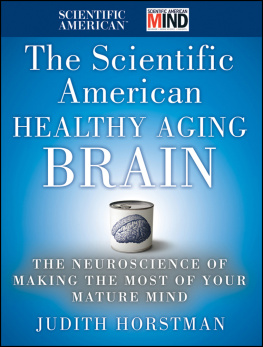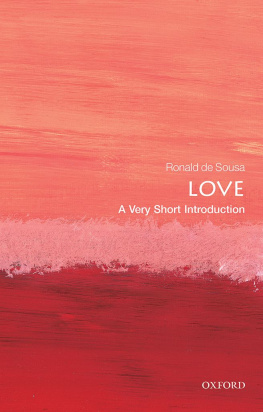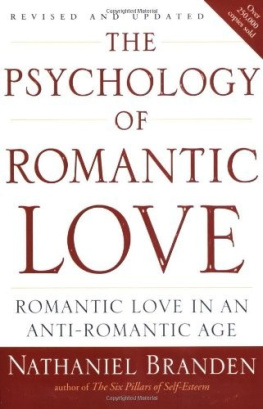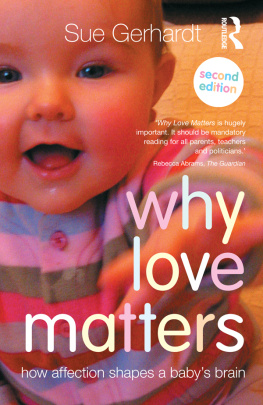Previous Books in the Scientific American Brain Series
The Scientific American Brave New Brain
The Scientific American Day in the Life of Your Brain
Copyright 2012 by John Wiley & Sons, Inc., and Scientific American, a division of Nature America, Inc. All rights reserved.
Published by Jossey-Bass
A Wiley Imprint
989 Market Street, San Francisco, CA 94103-1741www.josseybass.com
No part of this publication may be reproduced, stored in a retrieval system, or transmitted in any form or by any means, electronic, mechanical, photocopying, recording, scanning, or otherwise, except as permitted under Section 107 or 108 of the 1976 United States Copyright Act, without either the prior written permission of the publisher, or authorization through payment of the appropriate per-copy fee to the Copyright Clearance Center, Inc., 222 Rosewood Drive, Danvers, MA 01923, 978-750-8400, fax 978-646-8600, or on the Web at www.copyright.com. Requests to the publisher for permission should be addressed to the Permissions Department, John Wiley & Sons, Inc., 111 River Street, Hoboken, NJ 07030, 201-748-6011, fax 201-748-6008, or online at www.wiley.com/go/permissions.
The contents of this work are intended to further general scientific research, understanding, and discussion only and are not intended and should not be relied upon as recommending or promoting a specific method, diagnosis, or treatment by physicians for any particular patient. The publisher and the author make no representations or warranties with respect to the accuracy or completeness of the contents of this work and specifically disclaim all warranties, including without limitation any implied warranties of fitness for a particular purpose. In view of ongoing research, equipment modifications, changes in governmental regulations, and the constant flow of information relating to the use of medicines, equipment, and devices, the reader is urged to review and evaluate the information provided in the package insert or instructions for each medicine, equipment, or device for, among other things, any changes in the instructions or indication of usage and for added warnings and precautions. Readers should consult with a specialist where appropriate. The fact that an organization or Web site is referred to in this work as a citation and/or a potential source of further information does not mean that the author or the publisher endorses the information that the organization or Web site may provide or recommendations it may make. Further, readers should be aware that Internet Web sites listed in this work may have changed or disappeared between when this work was written and when it is read. No warranty may be created or extended by any promotional statements for this work. Neither the publisher nor the author shall be liable for any damages arising herefrom.
Jossey-Bass books and products are available through most bookstores. To contact Jossey-Bass directly call our Customer Care Department within the U.S. at 800-956-7739, outside the U.S. at 317-572-3986, or fax 317-572-4002.
Wiley also publishes its books in a variety of electronic formats and by print-on-demand. Not all content that is available in standard print versions of this book may appear or be packaged in all book formats. If you have purchased a version of this book that did not include media that is referenced by or accompanies a standard print version, you may request this media by visiting http://booksupport.wiley.com. For more information about Wiley products, visit us www.wiley .com.
Library of Congress Cataloging-in-Publication Data
Horstman, Judith.
The Scientific American book of love, sex, and the brain : the neuroscience of how, when, why, and who we love / Judith Horstman. 1st ed.
p. cm. (Scientific American ; 3)
Includes bibliographical references and index.
ISBN 978-0-470-64778-3 (cloth); ISBN 978-1-118-10951-9 (ebk.); ISBN 978-1-118-10952-6 (ebk.); ISBN 978-1-118-10953-3 (ebk.)
1. Love. 2. Sex (Psychology) 3. Sex (Biology) 4. Neurosciences. I. Scientific American, inc. II. Title. III. Title: Book of love, sex, and the brain.
BF575.L8H663 2012
155.3dc23
2011029321
To my family, my friends, and my Tribe, who taught me the meaning of love
ACKNOWLEDGMENTS
My thanks to the wonderful writers and editors of Scientific American and Scientific American Mind for the excellent articles on which so much of this book is based (they and their work are acknowledged in detail in the Sources) and to scientists everywhere for their deep and keen interest in sex and, more important, in how and why we love.
The creative and hard-working team at Jossey-Bass, who has worked on three brain books with me, are much appreciated. Special thanks to executive editor emeritus Alan Rinzler, who contributed much to the shaping and creation of this book; to senior editorial assistant extraordinaire Nana Twumasi, who ushered it through its final edits and revisions; my new editor, Margie McAneny; Carol Hartland, production genius; Bev Miller, much more than a copyeditor; Paula Goldstein, who designed the books interior; and all the marketing people who put my book in your hands, including Jennifer Wenzel, P. J. Campbell, Karen Warner. Ace freelance researcher Brianna Smith and Harvard University neuroscientist Kelly Dakin were invaluable. At Scientific American, Diane McGarvey and Karin Tucker were responsible for finding and approving years of archived material. Thank you.
Writing is a lonely activity. My family, good friends, and fellow writers supported me with company and cheer and had much to say on the subject of love. Many thanks to you all, in particular to first readers Judith Auberjonois, Ann Crew, Ferris Buck Kelley, J. T. Long, and the wonderfully productive and generous writing community of Sacramento, especially the Writers Who Wine.
PREFACE: WHO DO YOU LOVE?
Who do we love? Who loves us? And why? Why does some love die while other love lasts? Is it really a mysteryor can science (specifically neuroscience) shed some light on how, why, and who our brains love? Probably it can.
Weve been learning more about sex every day, especially since Alfred Kinsey began asking Americans exactly what we were doing sexually, where, and with whom, and since William H. Masters and Virginia E. Johnson began scrutinizing and categorizing what our genitals were doing while our brains were having sex.
Recently researchers have been studying what in our brains makes our hearts go pitter-patter with lust and with lasting lovewith the whole smorgasbord of emotions, including the love of parent and child, the affectionate love of companionship, the role that the love of animals can play in our lives, and the love of God.
Scientists have learned that the brain in love and sex uses an entire pharmacy of chemicals and chemical actions and reactions, calling forth a tsunami of neurotransmitters and hormones. And now we are able to actually look at a brain thats in love, lust, or both. New imaging technology allows scientists to peer inside our brains, our primary sex and love organ, to see whats happening in there. Brain scans, especially the functional magnetic resonance imaging scans, allow scientists to see brain activity in real time in a live, thinking, feeling, loving (or sexually excited) brain. They allow scientists to watch as our brain experiences romance, sex, love, and loss, and several emotions in between.
This book is structured around the way your brain encounters and experiences various kinds of love, beginning with prenatal influences and continuing through parental love, friendship, sex, romance, marriage, religious love, and beyond. It is based on the indisputable evidence that we are hardwired to connect to one another. Love is who we are.










